Maple Trees and Family: A Long-Term Relationship
Maple sugaring on the New England family farm continued a long-term relationship between people and place. Maple trees bordering country lanes and front yards bear witness to an alliance at least 250 years old. The trees outlived the people, generation after generation. The Kelley family joined in the ritual during the 1950s as they started tapping trees. The following confirms the influence those trees (and their sap) had on the well-being of one family and their farm and on a wider rural community.
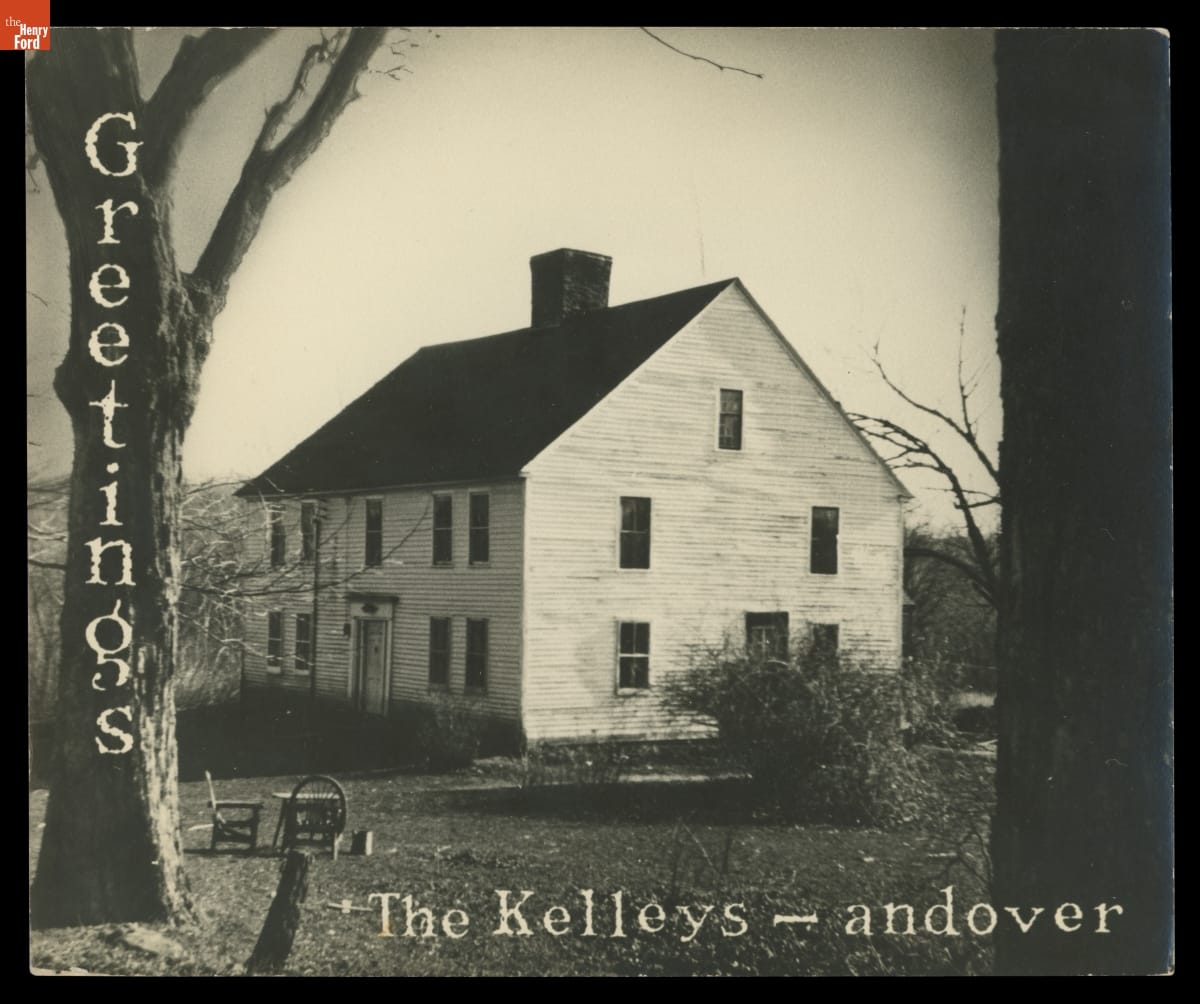
The Kelley family featured their new home, the house that Enoch Badger built more than 200 years before, on their 1953 Christmas greeting card. / THF706177
When Enoch Badger built his house in 1747, he planted a row of sugar maple trees at the same time. Mostly for making maple syrup, the trees had many side benefits. Hard maple wood was choice for utilitarian kitchenware, as firewood for cooking and smoking meat, and for heat. Roadside hitching posts stood under the trees, where horses tied to them could benefit from the shade.
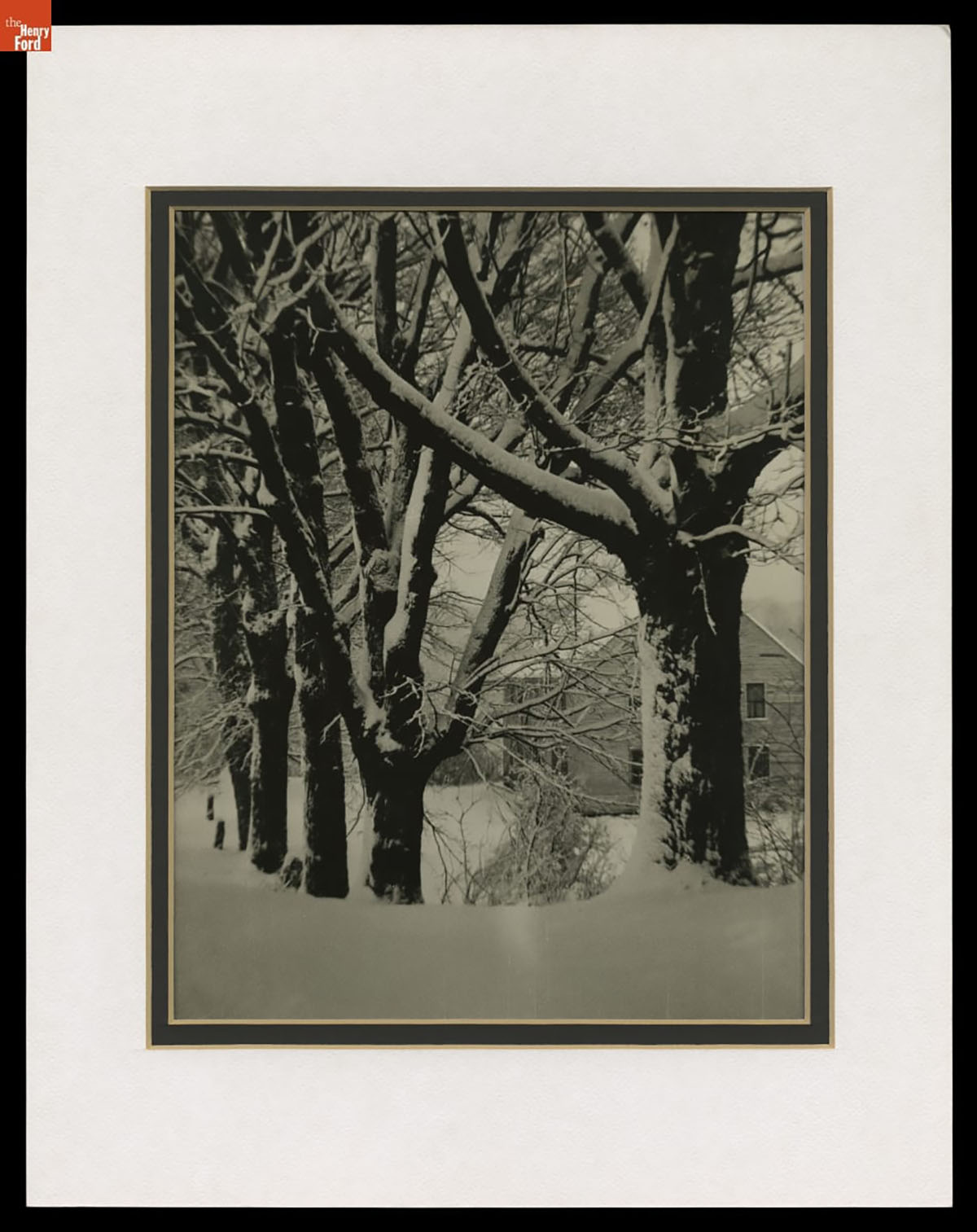
Kelley homestead, Andover, Connecticut, 1953-1960. This photograph was one of Lois Kelley’s favorites, with maple trees lining the lane in front of “the home of her heart,” as her daughter explained. / THF706185
Lois and Bob Kelley purchased the 89-acre Badger farm in 1953, with plenty of maple trees mixed into the hardwood forest. A consulting forester helped them create- a management plan, based on the concept that managed forests sustain people who rely on natural resources for income. The plan included thinning trees for firewood, harvesting saw logs, planting Christmas trees, maintaining the maples as a sugarbush, and developing wooded access roads. The sugarbush factored prominently in the Kelley family’s farm income plan.
The Kelleys found the 200-year-old house appealing as a grand old structure needing their attention to make it whole and to make it their home. The couple, both 27 years old, dug into the house with gusto. They restored the fireplaces and removed wallpaper, plaster, and brick used to fill in the larger hearths. They made their first gallon of syrup over the restored hearth, boiling the sap they collected from the maples in a kettle suspended from a crane over the fire. Lois wrote on March 19, 1954: “It [the boiling of the sap] required much less attention” and “went faster than anyone had led me to believe.”
The first gallon created an appetite for more. They built a sugarhouse and boiled sap without interrupting other household routines. The whole family was involved. The Kelleys’ daughter wrote to her grandparents in 1954, explaining how “My Daddy made some holes in two trees so sap could come out of them and Mommy is keeping the fire going and she hangs a pail up and my Daddy hangs a pail up too.”
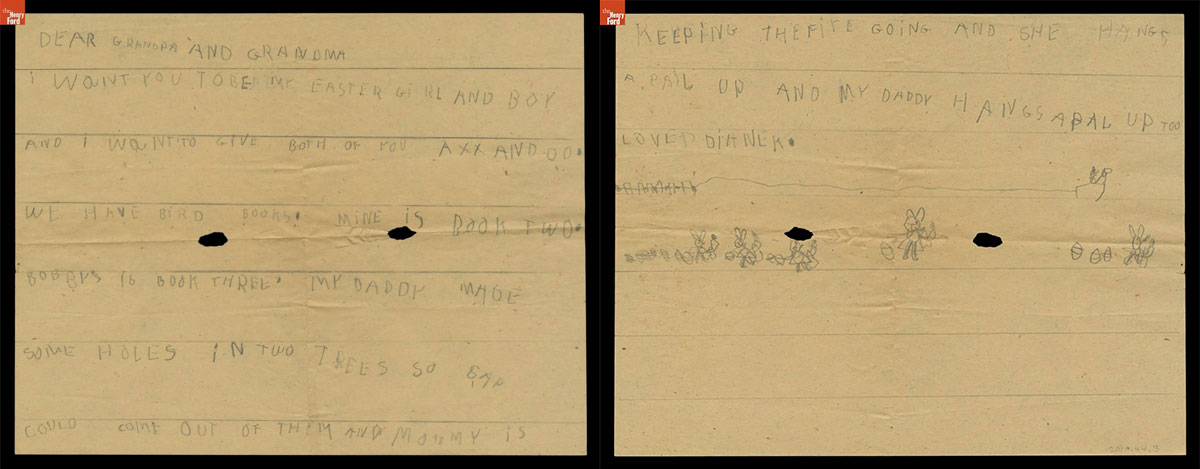
March 19 1954, Lois enclosed her 5-year old daughter’s letter “Dear Grandpa and Grandma” with her own, “Dear Mother and Dad.” / THF706181, THF706182
The Kelley family collected sap from the maple trees in their sugarbush. Tapping trees warranted a celebration that included tasting the icy fresh sap direct from the trees. The Kelley children collected the sap daily from 50 to 75 buckets after school. The Kelleys’ 10-year-old son and his 6-year-old sister emptied the sap buckets into milk cans strapped to the back of the tractor to transport the sap to the sugarhouse.
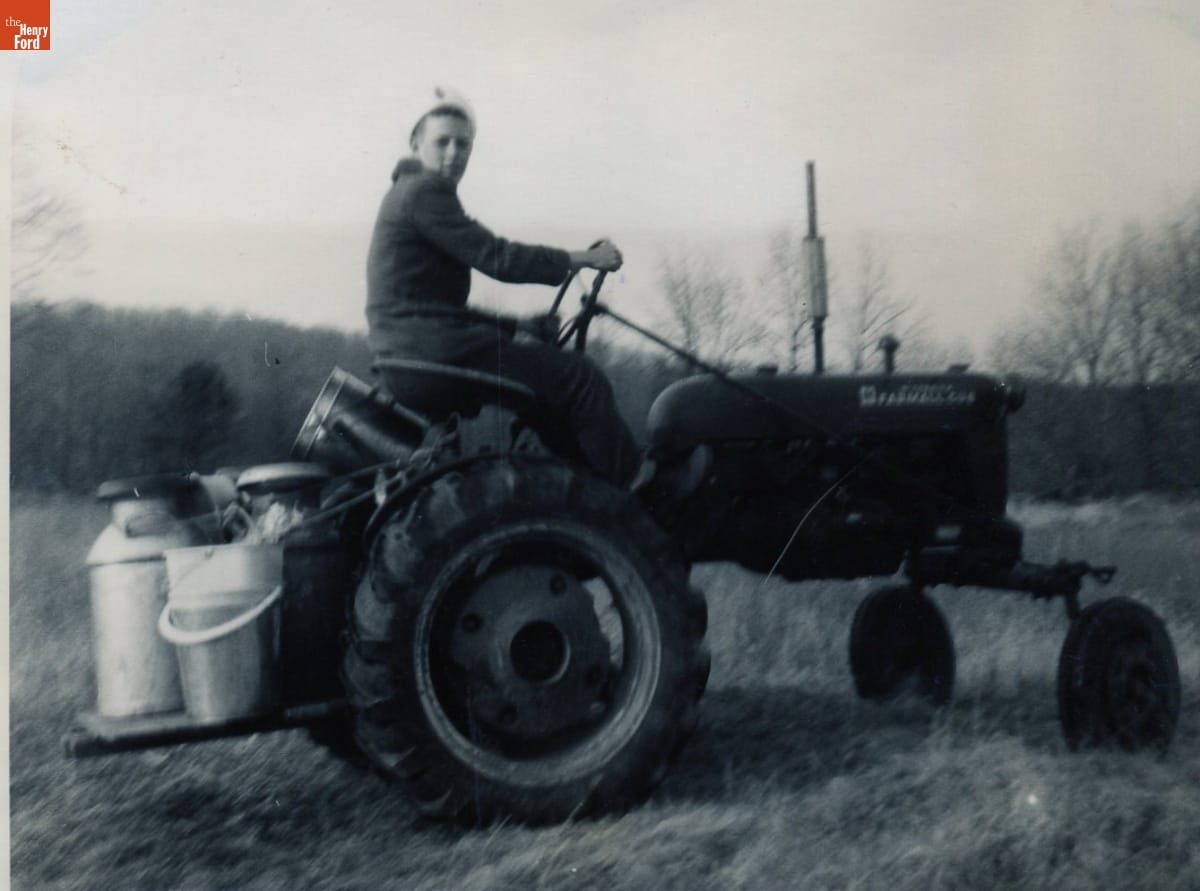
Hauling maple sap to the sugarhouse on a Farmall Cub tractor, 1959. / THF611287
Sugaring heralded the rapid approach of spring. The season began around February 10 each year in east-central Connecticut. Other signs of spring appeared at the same time: the pussy willow buds that made ideal indoor bouquets, crocus blooms, and spring blizzards. In 1957, Bob tended the sugarhouse, boiling sap almost continuously from February 19 until the season was over.
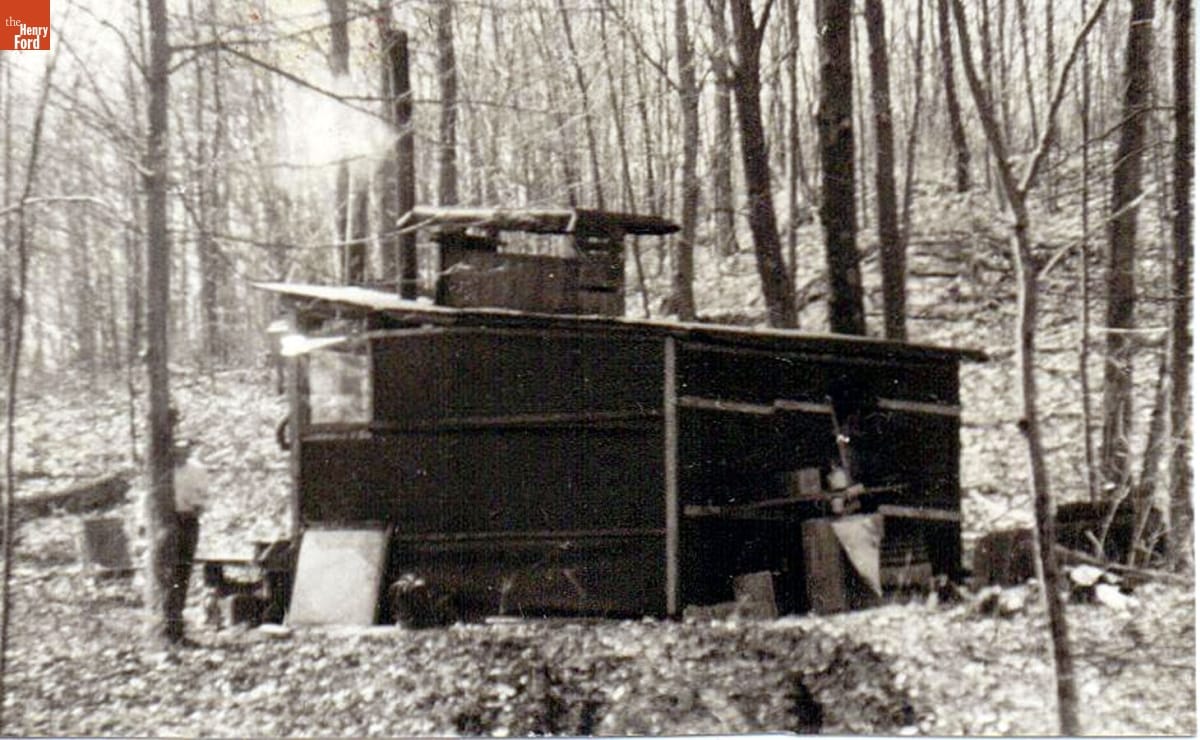
Sugarhouse at the Kelley home on Bear Swamp Road, Andover, Connecticut, 1958. / THF611285
When Benny, the French-Canadian father of a family friend, took over as job boss in 1959, he brought the Kelley operation to a new level. The Kelleys built a new sugarhouse and updated the stove, and Benny stayed for the season. Every year after that, his arrival signaled the start of sugaring for the entire neighborhood. He introduced new treats like boiled maple eggs, doughnuts, sugar on snow, fizzy sap cocktails, maple milk, and taffy for toast.
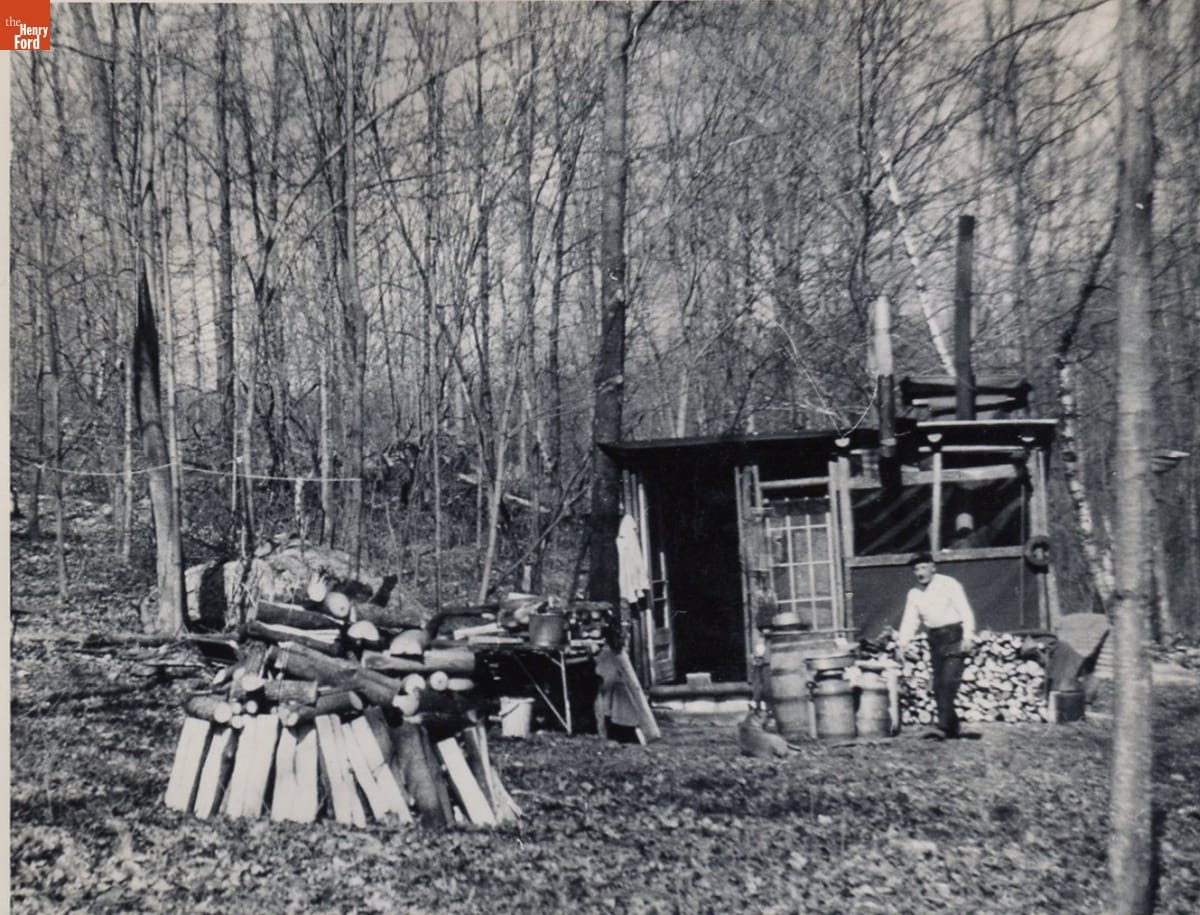
Benny, the “job boss,” outside the sugarhouse at the Kelley home, Andover, Connecticut, 1959. / THF611288
Half a dozen of the Kelleys’ neighbors pitched in to build Benny’s sugarhouse. In 1959, when Bob was suddenly hospitalized halfway through the season, Lois wrote: “A crowd of men cutting wood for sugar house – Phil Denoncourt, John Hutchinson, Howard Stanley, Max Hutchinson Sr., Frank Haines, Mr. Thomas, Geo. Nelson. Benny made baked beans. Lois sent down choc cake + coleslaw.”
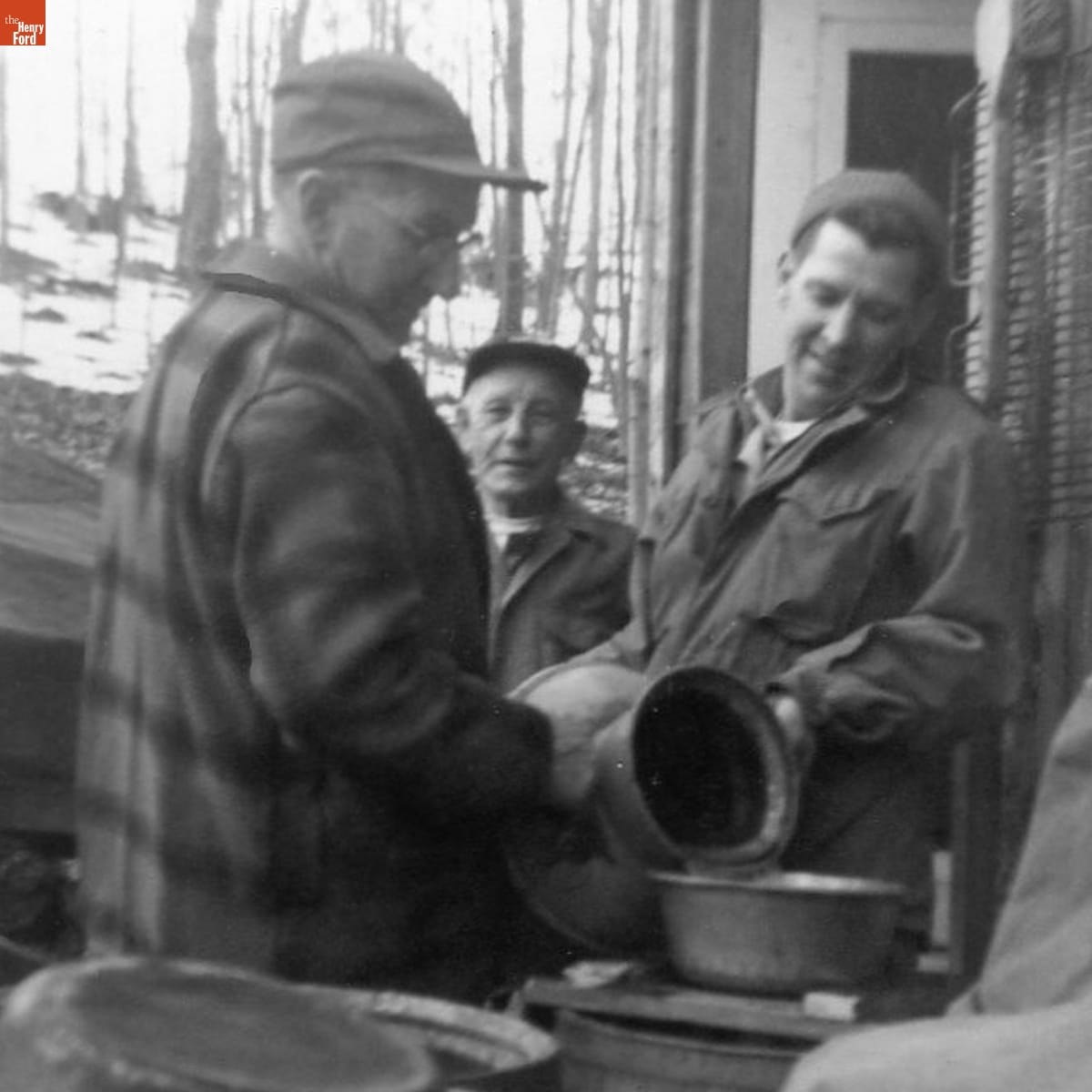
Bob Kelley pouring sap at the Sugar House, 1959. / THF611286
The Kelleys designed a linoleum block print for their maple products. The bear under a maple tree depicted the location of their sugarbush on Bear Swamp Road. These labels affixed to cans alerted buyers to the source of the syrup.
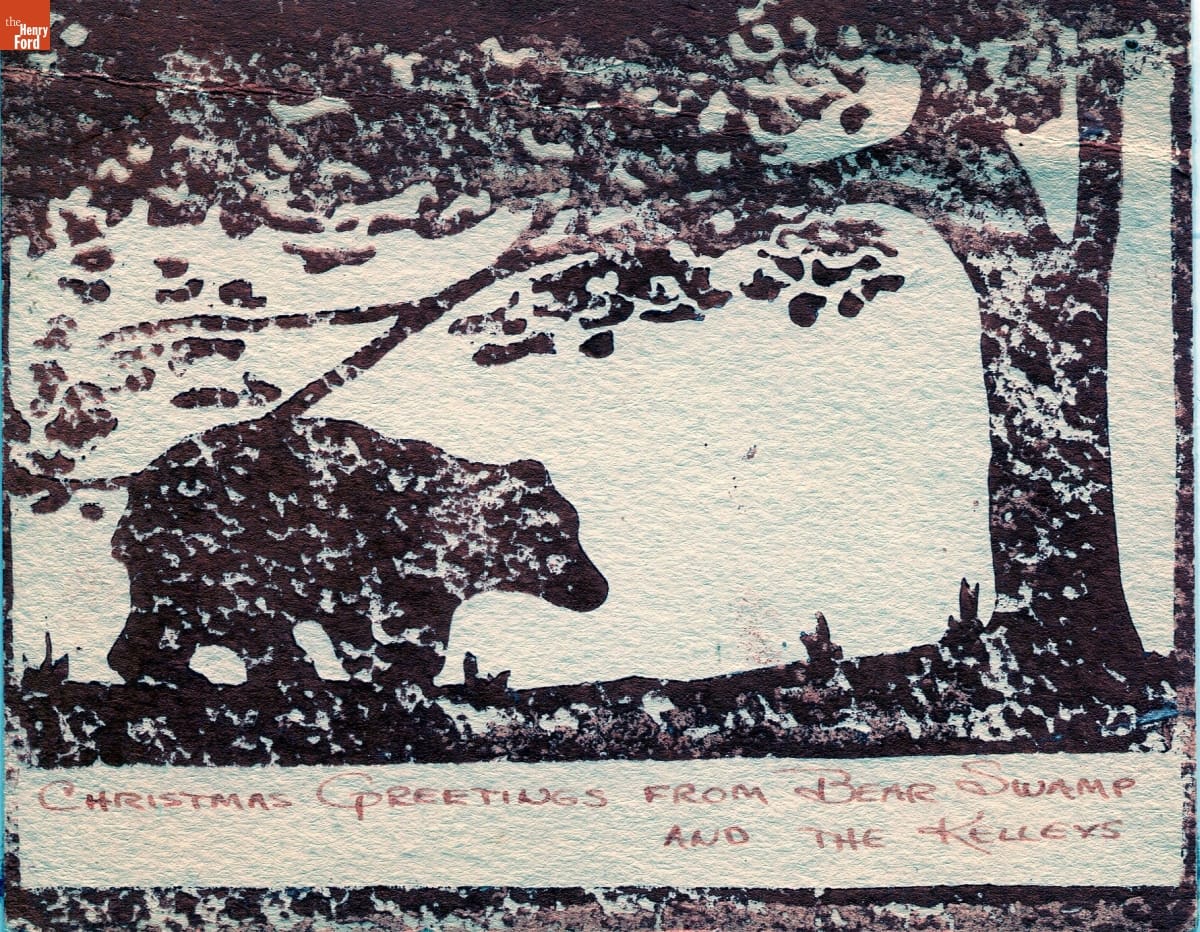
Christmas Greetings from Bear Swamp and the Kelleys, 1960. / THF611289
On March 11, 1959 — her birthday — Lois wrote that they “tapped more trees — about 75 buckets now.” That year, with Benny as job boss, they processed 4,876 gallons of sap. Then boiled down this yielded 26 pounds and 2 ounces of maple sugar.
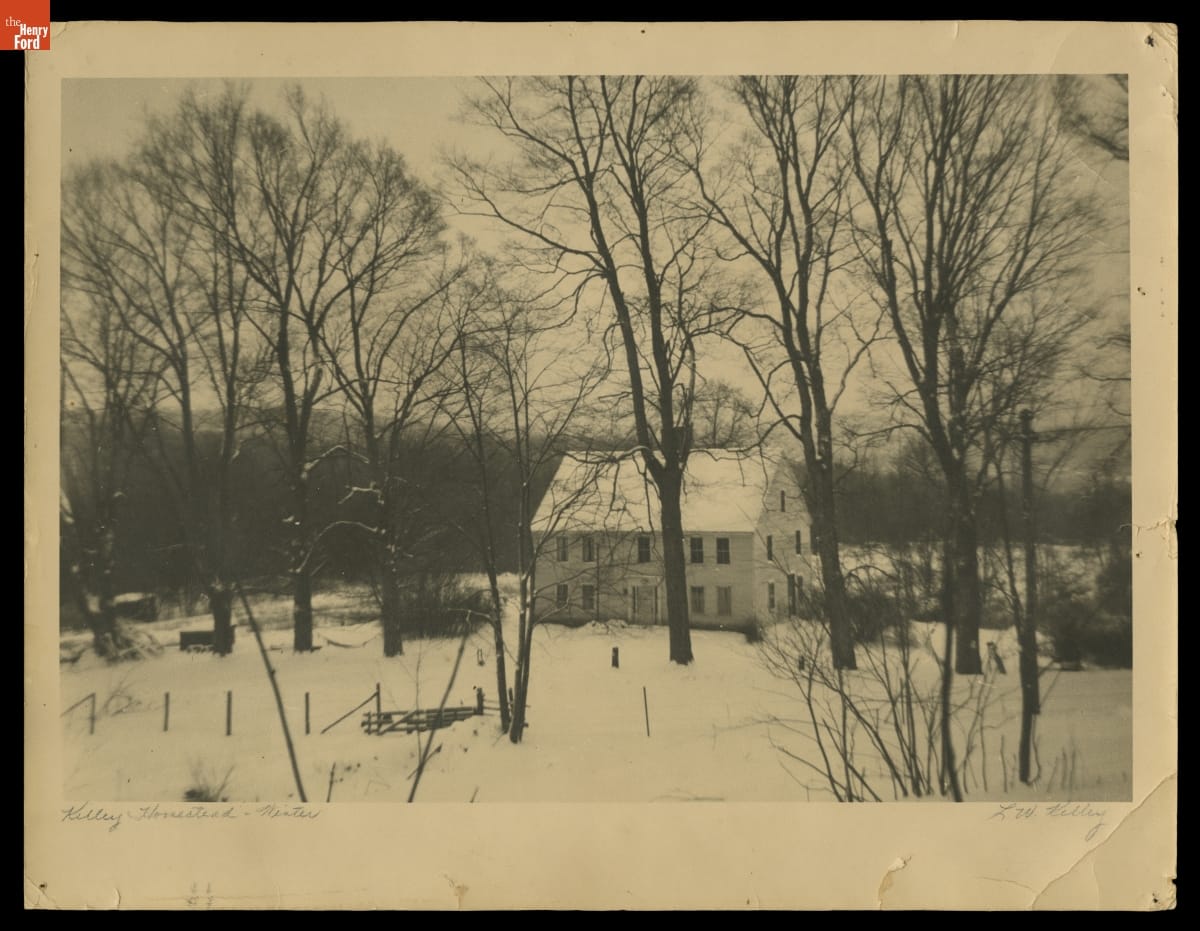
Sugar maple trees lining the road in front of the Kelley homestead, Andover, Connecticut, 1955. / THF706183
The season ended amidst numerous spring chores. On April 7, 1954, Lois wrote: “Quit maple at 1 gallon; harrowed garden, started peas, radishes outdoors.” In 1959, she bought gallon cans for shipping syrup, and on the same day, she accepted 1,000 white spruce seedlings to plant for Christmas trees.
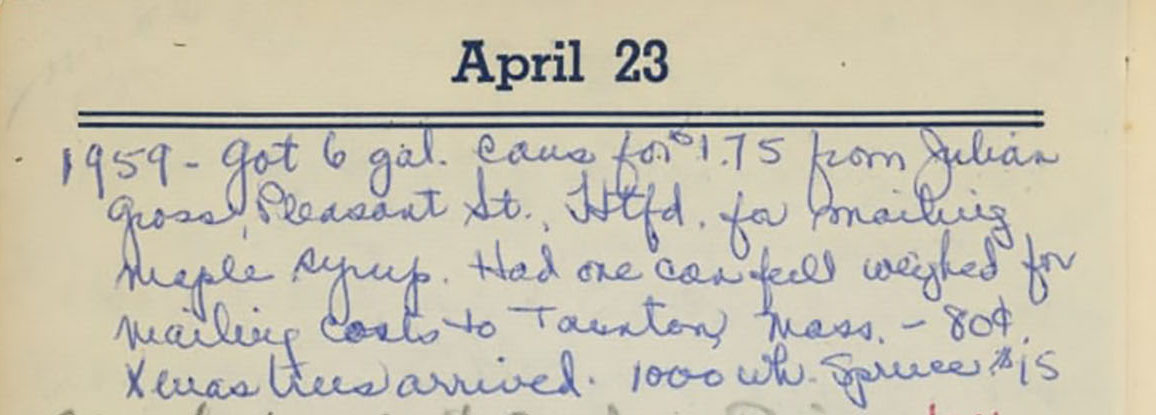
Detail, April 23, 1959, from Perpetual Year Book and Daily Reminder, with Lois Kelley's day notes from 1957-2000, in the collections of The Henry Ford. For the complete page, see THF706190.
On April 1, 1960, Lois noted: “first peepers. All ice off pond. Taking taps out. 17 ½ gal syrup, 2 batches taffy.” With dry Yankee humor, the Kelleys removed their tapholes and hung them to dry, to be reused the next year.
As the Kelley family moved on to other busy aspects of their farm life, they also remained attentive to their sugarbush with the forest management plan as their guide. That ensured that the next year, they would tap only maples old enough to spare the sap without damaging the tree, and only with the number of taps suitable to the tree’s age, with never more than three taps in any one tree. Such stewardship could help keep maple sap flowing for generations to come.
This blog was written by Daisy Kelley, curatorial research volunteer, The Henry Ford, with Debra A. Reid, curator of agriculture and the environment, The Henry Ford.

